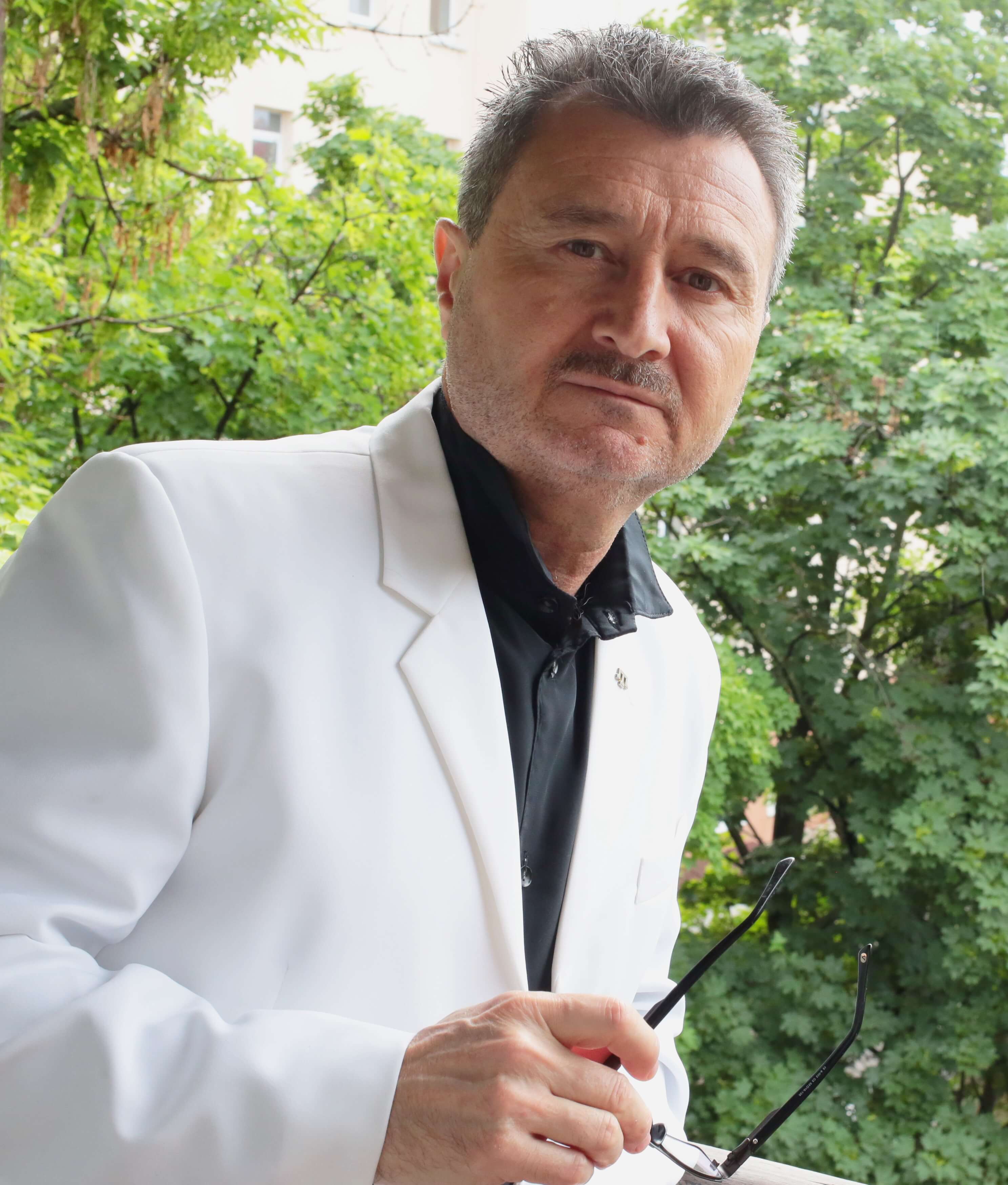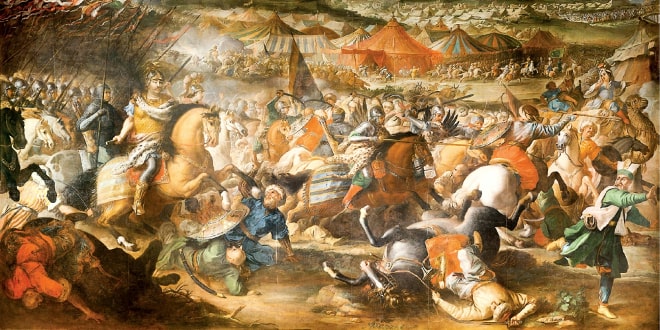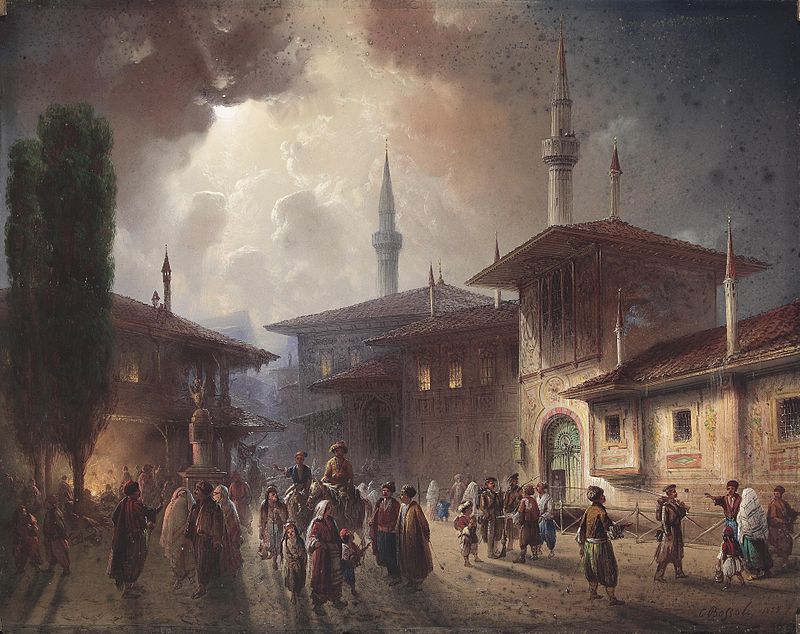Article - Crimean Tatar Musical Heritage
Crimean Tatar Musical Heritage

"Music is the universal language of mankind," – once said the 19th century American poet Henry Wadsworth Longfellow. Due to the importance of national musical culture for every nation, these words take on a special meaning. With the help of musical heritage, we not only preserve the continuity of generations, but also present ourselves in a multicultural world. Despite the historical tragedies of the past and the rapidly developing world of the present, the indigenous people of Crimea not only have not lost their cultural heritage, but also are trying to revive their spiritual values in their native land.
It is known from history that Crimean Tatars are the descendants of various ethnic groups, and Crimean Tatar music is also the result of various cultural traditions of the peoples who inhabited Crimea in the past. That is why Crimean Tatar musical and song folklore is a completely unique cultural phenomenon of the modern world. The folklore component of Crimean Tatar musical heritage is multifaceted and complex due to the variety of forms, genres, melodic, modal and rhythmic richness. That being said, undoubtedly, one should take into account the importance of the presence, in folklore samples, of language dialects, musical and intonational differences and genre features of a particular region of the Crimean Peninsula.
The study of these features was undertaken by many scientists who were actively interested in the culture of the people, formed "along the path of the merger of the West and the East". The samples of musical folklore, found in the cities and villages of Crimea, are used in the works of such scientists as A.K. Konchevsky, A. Olesnitsky, R. Lakh, M.I. Krasev, O.I.Shatskaya, V.V. Paskhalov , K. V. Kvitka, O. N. Gumenyuk, the Crimean Tatar composers A. Refatov, Y. Sherfedinov, I. Bakhshish, F. Aliyev, as well as in the works of the famous composers of the past A. A. Spendiarov, M. I. Glinka, N.A. Rimsky-Korsakov, A.P. Borodin A.K. Glazunov, M.A. Balakireva.
Many surviving samples of Crimean Tatar musical and song folklore were recorded by ethnographers from the musicians and performers (ashik, kedai, usta) of the second half of the 19th and early 20th centuries. Among them, the noteworthy are Jangazy Sherfedin, Eshmyrza, Arpiy-Ismail Salet, Ziyadin Jemaya, Edige Dadai, Seyit Ablu, Kerim Usta, Mamut Refat and others. By passing from generation to generation, and then from recordings by collectors, the texts of the medieval Crimean Tatar traveling storytellers, Ashyk Umer and Jevkheria, have come down to us; they were singing their works to the accompaniment of saz, a traditional string-plucked musical instrument. It is also worth mentioning the custodians of Crimean Tatar musical and song folklore, musicians and performers of the "Soviet period" Appaz Medzhit, Ziyadin Memish, Sabrie Eredzhepova, Edie Topchi, Murtaz Velidzhan, Ismail Mejit, Memet Abibulla, Fatime Bekhshish, Elmaz and Munever Alievs, Enver Sherfedinov and many others; thanks to them many samples of national musical heritage have come down to us.
As mentioned above, the peculiarities of complex ethnogenesis, socio-historical, ethnographic, linguistic differences among Crimean Tatar ethnic groups left their mark on the folklore component of a particular region. The folk music of the steppe part of the peninsula is dominated by songs "jyr" and short rehash songs "chyn", similar to improvisational sung couplets, often performed by two or more participants at different mass events. Chynlar (re-singing) was mostly part of traditional festivities, holidays, dating rituals for young people and weddings. In the dance music of the steppe part of Crimea, there should be noted the slow melodies "agyr ava", the round dance "jiyin" and the fast dance melodies, called "yengil ava" by the steppe Crimean Tatars. The latter were represented not always only by the traditional Crimean Tatar dance "khaitarma", but sometimes also by song melodies. At the same time, the rhythmic characteristics of the main part of musical material remain common to all Crimean Tatar music. These are both simple and mixed sizes 5/8, 6/8, 7/8, 9/8 with different groupings.
The musical traditions of the submontane and mountainous Crimea were formed not only through the interaction of various cultural influences of local ethnic groups, but also due to the concentration of professional performers here during the khan’s period - poets, singers, musicians. Living in the palaces of the local nobility, through their creative work, they formed the musical preferences of a part of the Crimean society.
At the end of the 16th century, the main abode of arts was the Khan's Palace in Bakhchisarai, where not only the invited musicians and performers, but also the Crimean rulers themselves were engaged in creative work. It is admirable and prideworthy that the Crimean Khan Bora Gazi II Geray went down in Crimean Tatar history not only as a warrior and wise politician, but also as a brilliant poet, musician and composer. Moreover, in the Turkic world, he is recognized as one of the classics of Turkic music and is the author of a number of scales of Crimean Tatar and common Turkic music. For many years, for well-known reasons, Crimean Tatars did not have the opportunity to get to know the work of Khan Bora Gazi II Geray, but thanks to the efforts of the composer, Honored Artist of Ukraine Jemil Karikov, a unique collection of works by the Great Ruler was released under the title "Crimean Tatar instrumental music of the Khan’s period" (Simferopol, publishing house "DOLE", 2007). Moreover, the musical group "Makam" created by Jemil Karikov performed the works of that distant era, restoring the connecting thread of cultural traditions.
Returning to the theme of musical and song folklore and the influence of various aspects on its formation in the national environment of the submontane, mountainous (orta yolak) and coastal (yaly boyu) regions of Crimea, we should also note such musical genres as instrumental melodies: "turku", "yyr" , "oyun ava", "khaitarma", "dolu", "karshilama", "eol avasy", as well as "jiyin" and "khoran", performed by participants at the end of mass events, folk festivals of Hydyrlez, Derviza and Teprech.
Almost all of these genres of national music are represented in the traditional Crimean Tatar wedding ceremony, which is distinguished by a complex multi-level action, where the musical component is one of the main and distinctive features. The surviving musical samples of folklore give a complete picture of the Crimean Tatar traditions and rituals used during the period of acquaintance of the young, as well as before the wedding, during the wedding festivity and after it. Among them are songs and dance melodies of the rituals "Henna gejesi", where the key ritual action is the coloring of the bride's palms and fingers with henna and the bride's saying farewell to her girlfriends, as well as "Tyrash akshamy" or "Boydak vedasy" (a party of the groom's farewell to bachelorhood).
The samples of traditional Crimean Tatar dances "agyr ava" and "khaitarma", which are presented in a common binary form at the wedding ceremony, are highlighted in a separate section of instrumental music. It is also worth noting that these are the most used dance melodies that distinguish Crimean Tatar folk music from the folk samples of other peoples of the Black Sea region and are a kind of musical code of the indigenous people of Crimea. In this regard, a special genre of Crimean Tatar song folklore - songs "makam" (uzun avalar) with lingering vocal chants – should be mentioned. It is in the makams that the features as well as the modal and intonational richness of Crimean Tatar folk music is shown in the most vivid and detailed manner.
Discussing the Turkish and Arab influences on the traditional music of Crimea, it should be noted that this became possible thanks to the penetration of Islam into all spheres of life of the Crimean Tatar people. Islamic cult rites (collective recitations of the "dua" prayer) accompanied a person from their birth to death, firmly becoming part of their national traditions and customs. In Crimean Tatar traditional music, religious chants Ilyakhi have certain principles of performance, such as "vakuf ilyakhi" (solo performance) and "tevhid ilyakhi" (ensemble performance).
Crimean Tatar musical and song folklore has many genres. These are historical, lyrical, comic, children, lullaby, emigrant, ritual, calendar, labor, soldier, exile, round dance, duet songs. The diversity of the artistic world of the Crimean Tatar folk song is due to the rich ancient traditions of national folklore. Even without delving into the professional analysis of musical material, it is obvious that the interaction of the emotional component and refined poetry with the harmonious combination of everyday specifics and the synthesis of various rhythmic and melodic-intonation schemes emphasize the uniqueness of individual folklore samples.
The genres of instrumental folk music are represented no less diversely. Many of them have received a second life in the last decade, having returned from oblivion and being performed by the ensemble "Makam", in the programs "Yyrla sazym" of the first Crimean Tatar TV channel ATR. From a historical perspective, this is undoubtedly a great breakthrough, given the fact that in the first decades of the 20th century, traditional musical instruments were completely lost. Before European musical instruments (trumpet, accordion, violin, clarinet) penetrated into the musical life of Crimean Tatars, the folk "chal takymy" (instrumental ensemble) consisted of "santyr", "saz" and "baglama", "zurna", "kavala", "tulup zurny", "dare", "zilli daula" and "chubuk daula".
The samples of folk music of the indigenous people of Crimea were collected and systematized thanks to the composers’ study of the national musical tradition and communication with the bearers of traditional folk art, such as Remzi Seitdzhelilov, Shevket Asanov, Enver Kamburov, Ibraim Ipekchiev, Dilyaver Osmanov, Yusuf Suleymanov and Memet Abibullaev, the composers Ilyas Bakhshish, Kabul Seitveliev, Edem Nalbandov, Memet Arslanov, Fevzi Aliyev, as well as the folk singers Fevzi Bilyalov, Urie Kermenchikli, Rustem Memetov, Gulizar Bekirova, Susanna Memetova, Zarema Khanum and others.
A special role in the revival of the musical culture of Crimean Tatars belongs to the composer Jemil Karikov. Having returned with his people from exile to Crimea, he created an ensemble of Crimean Tatar traditional music "Makam" and promoted national musical art through the creation of television programs "Kadimiy chalgyy aletleri" and "Yyrla sazym" on the only Crimean Tatar TV channel ATR. Today, these records make up the golden fund of Crimean Tatar music and are a kind of appeal to future generations of connoisseurs of Crimean Tatar culture.
Chairperson of the Charitable Foundation for Cultural Heritage.


.jpg)
.jpg)
.jpg)
.jpg)
.jpg)
.jpg)

